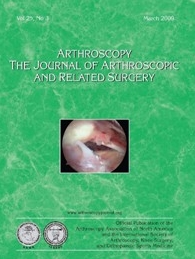
Shoulder & Elbow
Early passive motion improves shoulder flexion following arthroscopic rotator cuff repair
This report has been verified
by one or more authors of the
original publication.
Arthroscopy. 2014 Aug;30(8):997-1005
This meta-analysis included 5 level II randomized control trials that compared early passive motion to sling immobilization following arthroscopic rotator cuff repair. The aim of this study was to analyze retear rates and range of motion between groups. Results from this analysis indicated that early passive motion significantly improves shoulder flexion at 3, 6, and 12 months postoperatively, while retear rates do not differ significantly between groups at the 1 year follow-up.
Unlock the full article
Get unlimited access to OrthoEvidence with a free trial
Start TrialCritical appraisals of the latest, high-impact randomized controlled trials and systematic reviews in orthopaedics
Access to OrthoEvidence podcast content, including collaborations with the Journal of Bone and Joint Surgery, interviews with internationally recognized surgeons, and roundtable discussions on orthopaedic news and topics
Subscription to The Pulse, a twice-weekly evidence-based newsletter designed to help you make better clinical decisions
Exclusive access to original content articles, including in-house systematic reviews, and articles on health research methods and hot orthopaedic topics
Or continue reading this full article
Register Now

Subscribe to "The Pulse"
Evidence-Based Orthopaedics direct to your inbox.





































